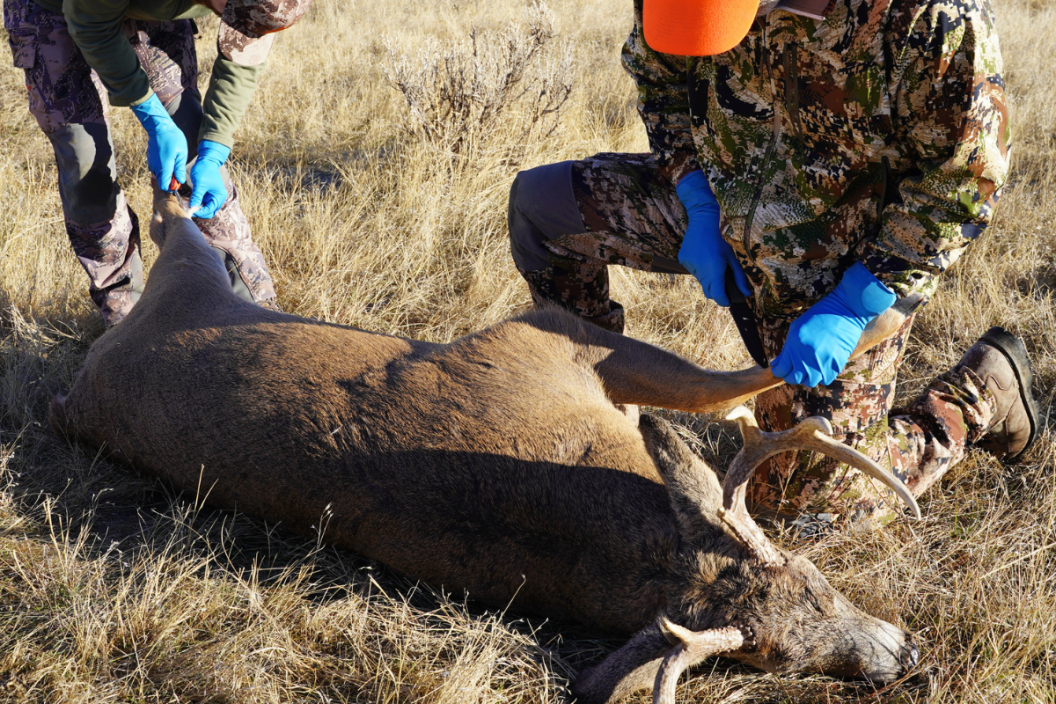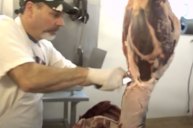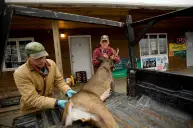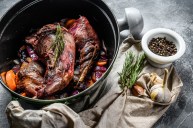"You've never field dressed a deer before? Here, I'll tell you how to do it."
The first time someone explained how to clean a deer to me, I'm certain I looked like a deer in headlights myself. Removing skin? Pulling on an esophagus until all the intestines come out? Cutting its head off? Were we going to watch Saw afterward? Certainly, I'd be covered in blood by the end of it all. The thought of having my hands deep inside a wild animal's chest cavity was unnerving at first. However, after I shot my first big game animal, all of those feelings changed for me.
Today, field dressing and butchering are some of my favorite parts of hunting. Things that I thought were a little disturbing or straight-up gross in the beginning started to feel normal for me. And these feelings didn't arise solely during butchering sessions; I used to find owning multiple firearms unnerving, too. Now that I have a good understanding of what it takes to be successful in the field, things like blood, guts, and guns aren't so bad anymore. In fact, I enjoy all of these things wholeheartedly now. When it comes to hunting, some things take a little getting used to. Here are a few activities that I found disturbing when I started hunting, but now, I really don't think they're all that bad.
Shooting Wild Animals
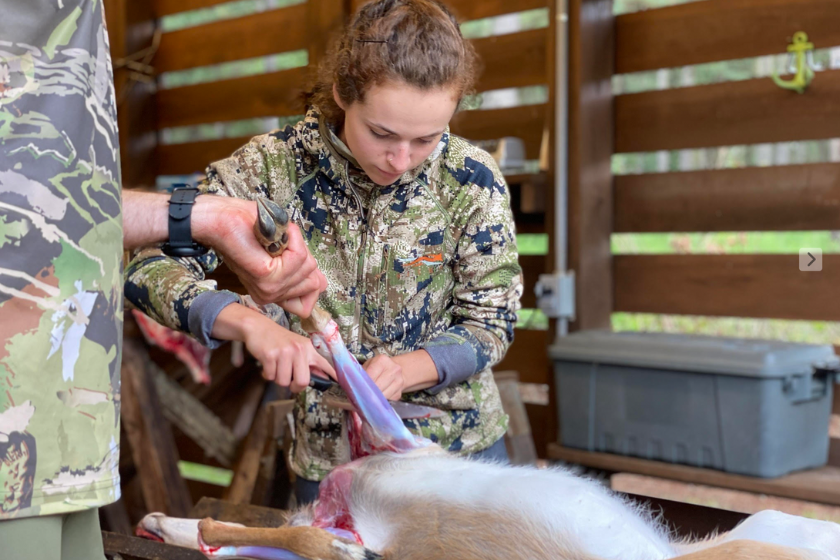
Photo by Gabriela Zaldumbide
Everyone's seen Bambi. Wildlife can pull on the heartstrings of empathetic humans, myself included. As a child and into my time as an undergraduate studying wildlife ecology, I thought it was disturbing that four percent of Americans were okay with killing innocent wild animals. I didn't know it back then, but this was my greatest misunderstanding when it came to hunting.
Today, I find it more disturbing that 98.4 percent of American households bought meat at a grocery store in 2020. According to the Farm Journal, the Food Industry Association and the North American Meat Institute's Foundation for Meat and Poultry Research and Education released the 16th "Power of Meat" report in March of 2021. They found 43 percent of Americans now buy more meat than ever. While this is great for the agricultural industry, it's a blow to hunting.
Wild game meat is some of the most ethically-harvested and nutrient-dense meat available to Americans. Wild game has no added hormones, no genetic modifications, and no antibiotics. Wild animals also get to live their lives in the great outdoors, coming and going as they please, without being restrained to pastures, stalls, pens, or enclosures. Wildlife managers also use hunting as a management tool, and with fewer hunters on the landscape, it becomes more difficult to do things like decrease the whitetail population in places like the Midwest, where it's desperately needed. When you shoot, field dress, and eat wild game, you give yourself access to some of the highest-quality meat available. As a hunter, you know the meat is going to be cooked with care and that the animal lived an extraordinary life in nature. Even though it's not emotionally easy to take an animal's life, it shouldn't be disturbing.
Field Dressing
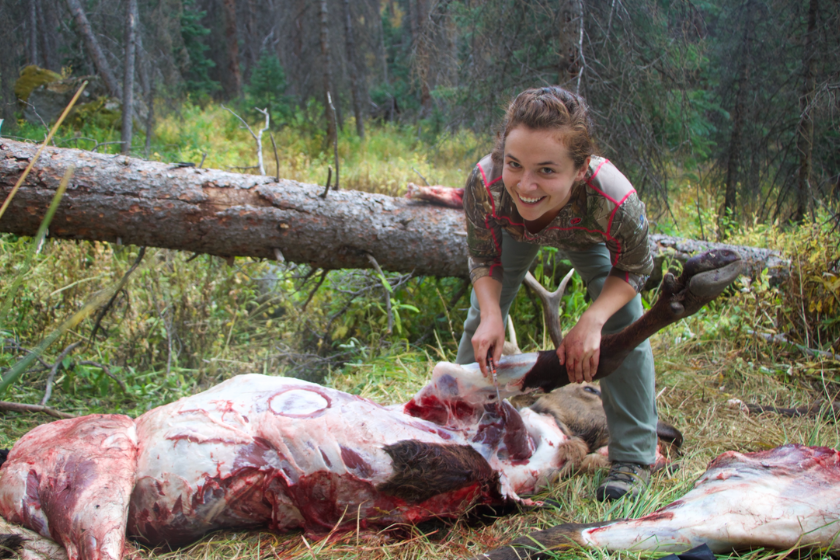
Photo by Gabriela Zaldumbide
Field dressing really intimidated me when I first started hunting. There's a lot of technical knowledge one needs when it comes to cleaning game and I didn't know anything about it. However, I knew it was a necessary part of hunting and that I needed to learn how to get it done. Thankfully, blood and guts don't nauseate me. Grabbing fresh, warm deer organs with my bare hands just seemed out of my realm.
After connecting with a few of my hunting mentors and learning how to field dress big game animals, though, most of my fears dissipated. My mentors told me to always start by thanking the animal for its life. Then, with clean, sharp knives, meticulously skin and gut the deer the traditional way or by using the gutless method. You're supposed to remove the quarters carefully to waste as little meat as possible. I always use great caution when removing the backstraps and tenderloins so as to not leave any of those delectable cuts on the carcass. As the field dressing duties went on, a dead deer turned into familiar cuts of meat before my eyes. This wasn't a gross act of barbarity. Rather, this was one of the most innately human things on the planet. The obvious care and love for venison that my mentors showed made this mental transition easier.
Butchering Wild Game Meat
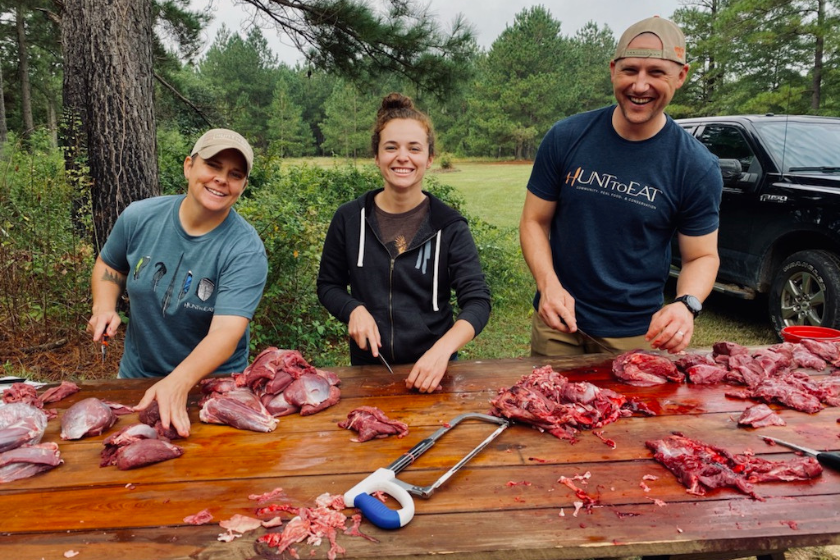
Photo by Gabriela Zaldumbide
After the field dressing is over, it's time to butcher wild game meat for the freezer. Today, I butcher all my own meat, but when I was learning how, I was hesitant to really "get in there." The cold, bloody cuts weren't exactly appetizing. I was also afraid of messing up by not trimming all the fat off, leaving too much silverskin on, and wasting quality pieces of meat. I'd also have to learn how to clean a heart sooner or later. The idea of slicing into a chilled deer heart seemed genuinely disturbing.
Despite my hesitations, I quickly found myself enjoying butchering. This is really where one gets to watch pieces of wild animals turn into food. Some cuts even look exactly like something you'd buy from a store after everything's said and done. While we butchered, my mentors described their favorite wild game meals to cook with each cut of meat. Shanks, steaks, and sausages were already being dreamed up even before the meat got to the freezer. The familiarity of their muscle groups combined with the excitement for delicious wild game meals made butchering fun, not gross, once I felt confident in what I was doing.
Making a European Mount
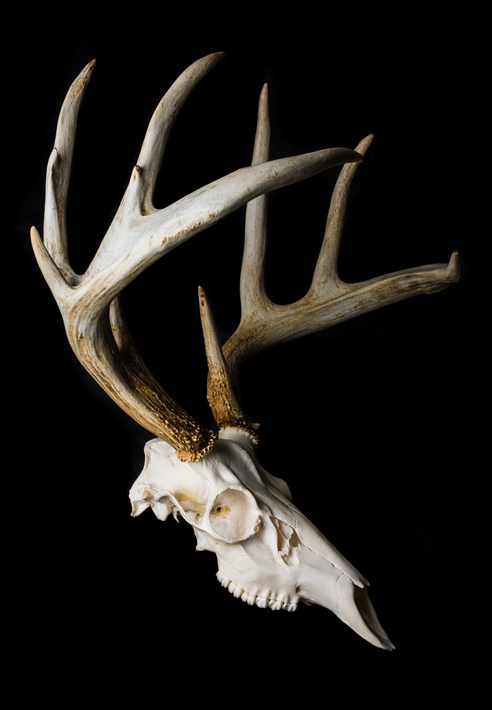
If you hunt on a budget like me, it's likely you've made your own European mounts before. After some Google searching and YouTube video-watching after I shot my first elk, I decided I was capable of making a euro mount. If these YouTubers could do it, I could do it, too. Right?
Making euro mounts truly isn't for the faint of heart. Have you ever plucked out an animal's eyeball before? I would not recommend it for just anyone. However, it's an essential part of making a euro mount. So is scraping (and power washing) out the brain matter. Prepare yourself to be splattered with chunks of tissue. Maybe wear a nose plug, too, so you don't have to smell the boiling skull water. Honestly, I still think making euro mounts is a little disgusting, but now I've made a dozen of them and it's not quite so disturbing anymore. Being prepared logistically and mentally for making them has quelled most of my concerns. After my first euro mount experience, I got an outdoor single-burner stove and a propane tank so I don't have to boil skulls in my kitchen anymore. I set up a tarp outside to pick and peel the remaining tissue off the skull post-boil. I'm less squeamish now when it comes to removing brains, eyes, and tongues, too. Making euro mounts really isn't so bad.
Owning Multiple Guns
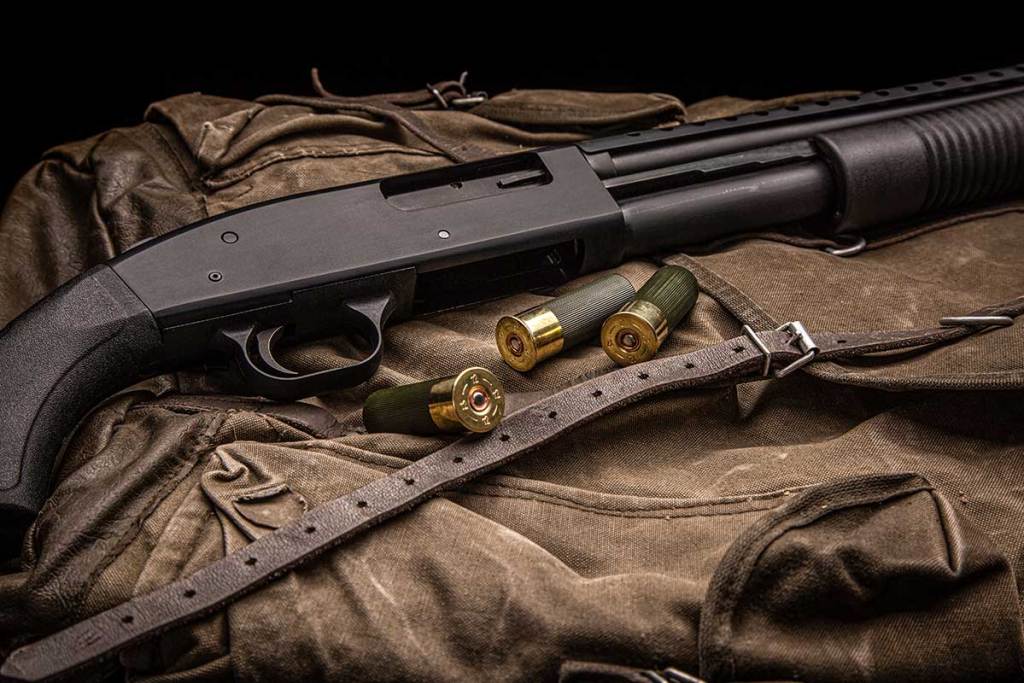
Prior to becoming a hunter, I always found it disturbing when folks described their fully-stocked gun safes. They'd list off their .300 Win Mag, their new 6mm Creedmoor, .308, .30-06, their grandpa's old 870 pump, a childhood .22, and plenty other examples. Why did these people need so many guns? Couldn't you just have one gun that fits all your needs?
Now that I've got a few years of hunting under my belt, I understand that having one gun that meets every need is literally impossible. I must've sounded ridiculous to anyone I shared my old opinion with. Some wildlife species are illegal to take with small caliber rifles, while others are illegal to shoot with a shotgun. While hunting with a pistol is legal in many places, I don't know anyone who hunts with one unless it's a .22 revolver. Owning multiple firearms isn't disturbing. It means one enjoys many different types of hunting, really loved their grandpa, or all of the above.
Ultimately, when I gained a better understanding of hunting, nearly all its grossness was eliminated. I surprised myself by enjoying these "gross" things so much. From making euro mounts to preparing venison dinners for my family, I don't find much about hunting to be disturbing anymore.
